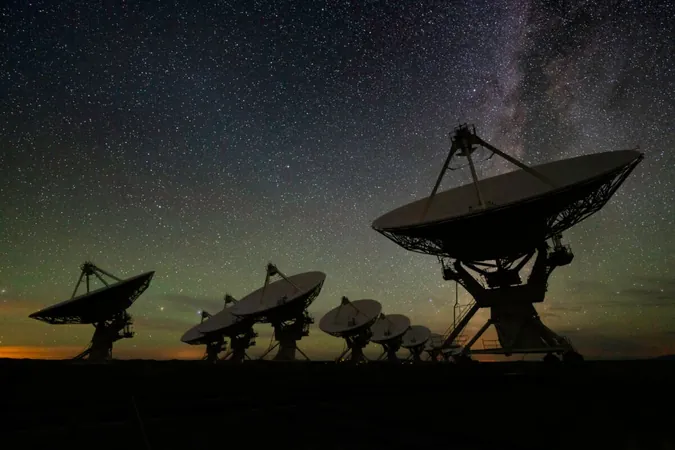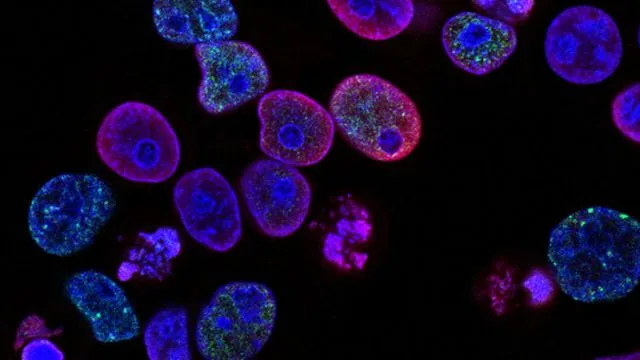
Dark Energy's Surprising Role: Could It Be the Key to Life in the Universe?
2024-11-23
Author: Liam
Introduction
In the 1960s, renowned radio astronomer Frank Drake unveiled his famous equation, an attempt to estimate the probability of discovering extraterrestrial life based on radio signals from other civilizations. Central to this equation is the rate of star formation—more stars typically lead to more planets, which increases the odds of life as we understand it.
Historical Context
For decades, astronomers have meticulously charted the history of star formation in the universe, analyzing how much cosmic material is transformed into stars across various epochs. This investigation is not just an academic exercise; understanding star formation rates is critical as they are influenced by numerous cosmological and astrophysical factors. Alter these elements, and the histories of galaxies—and their star formation efficiencies—would also change.
The Peak of Star Formation
Remarkably, the universe experienced its peak star formation rate over 10 billion years ago. Since that time, star formation has continued but at a declining rate. Predictions suggest that in approximately 100 trillion years, the final stars will extinguish. Dark energy—a mysterious force driving the accelerating expansion of the universe—plays a pivotal role in this timeline.
Impact of Dark Energy on Star Formation
The accelerated expansion caused by dark energy creates an unfavorable environment for star formation. As galaxies drift apart, they have fewer chances to combine and draw in fresh material, stymieing the process of star creation. Existing gas can get trapped in warm interstellar clouds, further preventing new stars from forming.
Exploring Variations in Dark Energy
A burning question remains: could variations in dark energy lead to different outcomes for star formation and the emergence of life? Daniele Sorini from Durham University’s Institute for Computational Cosmology recently led a study scrutinizing this significant query. She stated, “Understanding dark energy and its effects on our universe is one of the foremost challenges in cosmology and fundamental physics. The characteristics governing our universe—like the density of dark energy—could shed light on our existence.”
Unexpected Research Findings
However, the research yielded unexpected results. It turns out that star formation rates remain relatively stable, even under diverse dark energy conditions, including levels much higher than what we currently observe. Sorini remarked, “Surprisingly, even a substantially higher dark energy density would still be compatible with life, indicating that we may not inhabit the most likely universe.”
Star Formation Efficiency
In our universe, approximately 23% of all available cosmic matter will eventually form stars over its lifetime. While weaker dark energy forms allow for more efficient star formation—up to a maximum efficiency of 27%—the study reveals that even values of dark energy one hundred times greater than our current level could still allow for 5% conversion of available mass into stars. This is crucial, as it ensures that multiple star generations can form, providing plenty of material for planet formation and, potentially, life.
The Multiverse Perspective
If we consider that our universe might be just one of many in a vast multiverse, each with its unique dark energy value, this raises intriguing questions about our particular conditions. It seems our universe’s dark energy density is statistically unlikely. Most intelligent observers—assuming life arises in sufficiently star-rich environments—would likely find themselves in a universe with far higher dark energy.
Conclusion and Future Implications
This groundbreaking research implies that the dark energy we observe could be somewhat an anomaly within the multiverse. Professor Lucas Lombriser of the University of Geneva, a co-author of the study, stated, “It will be thrilling to use this model to investigate the emergence of life across different universes, challenging us to reassess the fundamental questions we pose about our own cosmos.” As scientists continue to unravel the mysteries of dark energy, one thing becomes more apparent: our understanding of life's potential in the universe may require a rethinking of what we once deemed natural. What other cosmic surprises might lie ahead?









 Brasil (PT)
Brasil (PT)
 Canada (EN)
Canada (EN)
 Chile (ES)
Chile (ES)
 España (ES)
España (ES)
 France (FR)
France (FR)
 Hong Kong (EN)
Hong Kong (EN)
 Italia (IT)
Italia (IT)
 日本 (JA)
日本 (JA)
 Magyarország (HU)
Magyarország (HU)
 Norge (NO)
Norge (NO)
 Polska (PL)
Polska (PL)
 Schweiz (DE)
Schweiz (DE)
 Singapore (EN)
Singapore (EN)
 Sverige (SV)
Sverige (SV)
 Suomi (FI)
Suomi (FI)
 Türkiye (TR)
Türkiye (TR)